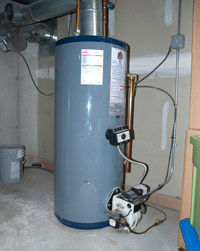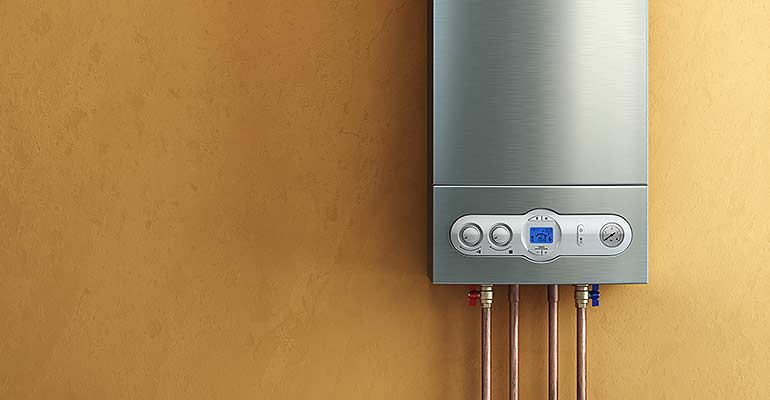Just how do you actually feel in regards to How to Maintain Your Water Heater & Prolong its Life?

Warm water is essential for daily comfort, whether it's for a revitalizing shower or cleaning recipes. To guarantee your hot water system runs effectively and lasts much longer, normal maintenance is key. This post gives sensible suggestions and understandings on just how to preserve your home's hot water system to avoid interruptions and costly fixings.
Intro
Keeping your home's warm water system could seem complicated, however with a few straightforward actions, you can guarantee it operates efficiently for many years to come. This overview covers whatever from recognizing your warm water system to DIY maintenance tips and knowing when to hire specialist help.
Importance of Preserving Your Warm Water System
Regular upkeep not only expands the lifespan of your warm water system but likewise ensures it operates effectively. Ignoring upkeep can bring about lowered performance, greater power costs, and even premature failure of the system.
Signs Your Warm Water System Needs Upkeep
Knowing when your warm water system needs attention can stop significant concerns. Keep an eye out for indicators such as irregular water temperature, unusual sounds from the heating system, or corroded water.
Flushing the Water Heater
Purging your water heater removes debris accumulation, enhancing efficiency and lengthening its life.
Monitoring and Replacing Anode Rods
Anode rods prevent deterioration inside the storage tank. Examining and replacing them when broken is vital.
Complicated Problems Requiring Specialist Assistance
Examples include significant leaks, electrical problems, or if your water heater is continually underperforming.
Regular Expert Maintenance Perks
Specialist maintenance can include thorough examinations, tune-ups, and making sure compliance with safety and security requirements.
Inspecting and Changing Temperature Setups
Readjusting the temperature setups guarantees optimum efficiency and safety.
Do It Yourself Tips for Maintenance
You can execute a number of maintenance jobs yourself to maintain your hot water system in top problem.
Looking for Leaks
Regularly check pipelines and connections for leaks, as these can cause water damages and higher expenses.
Understanding Your Warm Water System
Prior to diving into upkeep tasks, it's handy to comprehend the standard components of your warm water system. Typically, this includes the hot water heater itself, pipes, anode poles, and temperature controls.
Month-to-month Maintenance Tasks
Normal regular monthly checks can help capture small issues prior to they escalate.
Examining Pressure Alleviation Valves
Evaluating the pressure safety valve ensures it works appropriately and avoids too much pressure build-up.
Protecting Pipes
Insulating warm water pipelines lowers heat loss and can save energy.
When to Call a Specialist
While DIY upkeep is useful, some concerns require expert knowledge.
Final thought
Routine upkeep of your home's hot water system is vital for performance, longevity, and expense savings. By complying with these ideas and understanding when to seek expert help, you can ensure a reliable supply of hot water without unexpected disruptions.
Water Heater Maintenance Tips
Test the TPR Valve
Shut off the power and the cold-water supply valve. Place a bucket under the pipe connected to the temperature-pressure-release (TPR) valve on the top or side of the tank. (This valve opens if the tank pressure gets too high.) Lift the valve’s tab to let some water out, then let go. If water keeps flowing, drain the tank partway, unscrew the old valve with a pipe wrench, and install a new one. Check the Anode Rod
Put a hose to the tank’s drain cock and let out a few gallons of water. Now fit a 1 1/16-inch socket onto the rod’s hex head on top of the heater (or under its top plate) and unscrew the rod. If it’s less than ½ inch thick or coated with calcium, buy a new one, wrap its threads with Teflon tape, put it back in the tank, and tighten securely. Use this segmented rod if headroom above the tank is limited. Drain the Tank and Wash Out Sediment
Drain the remaining water in the tank into the bucket, then stir up the sediment on the tank’s bottom by briefly opening the cold-water supply valve. Drain and repeat until clean water comes out of the hose. Close the drain cock, refill the tank, and turn its power back on. Adjust the Temperature
Find the temperature dial on the side of the tank and unscrew its cover. Adjust the dial to 120 degrees using a flathead screwdriver. For every 10 degrees the temperature is lowered, you can expect to save up to 5 percent in energy costs. Turn the water heater off or the thermostat down to its lowest setting if you plan to be away from home for more than three days. Insulate the Pipes
Buy some self-sticking 3/8-inch-thick foam pipe insulation that matches the pipes’ diameter. Slide the foam over the hot-and cold-water pipes as far as you can reach. Insulating the cold-water pipe prevents condensation in summer. Peel the tape and squeeze the insulation closed. If the pipe is 6 inches or less from the flue, cover it with 1-inch-thick unfaced fiberglass pipe wrap. https://www.thisoldhouse.com/plumbing/21016402/how-to-maintain-a-water-heater

Hopefully you liked our post about How to Maintain a Hot Water Heater in a Few Simple Steps. Thanks a lot for taking the time to browse our blog. Appreciated our post? Please quickly share it. Help someone else find it. I take joy in reading our article about What Kind of Maintenance Do Water Heaters Need?.
Visit Homepage